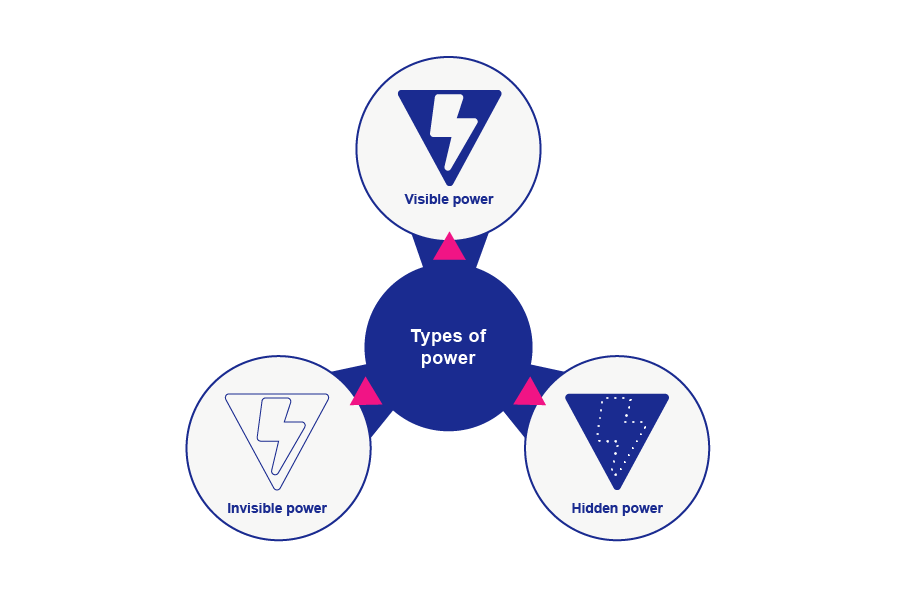Unit 2: Identify
2.4 Definition of power and types of power

Power is an individual’s capacity or ability to direct or influence the behaviour of others or the course of events.
When someone is in a position of power, they have greater ability to direct or influence and when they misuse their power, others are harmed, abused, exploited and/or harassed.
When thinking about the relationship between power, harm and abuse, it is helpful to think about power in three different ways – as visible, hidden or invisible (Hunjan and Pettit, 2011).
Visible Power
Power is sometimes visible, known or easily observed. It may not necessarily be negative as it can bring about positive change. Someone has a position of power over someone else by controlling them, making them do something they would not otherwise do. Those in these positions have a great deal of influence over everyone else in making decisions. This kind of power can be exercised in a number of ways, such as a threat of violence, provision, or withdrawal of money or resources.
For example, you and your organisational staff and representatives have visible power. You have the power to make decisions, have access to resources and be able to provide services or support beneficiaries/clients. This visible power may be misused if, for example, the worker coerces a beneficiary into exchanging sex for goods, services or support that is already rightfully theirs.
Hidden Power
Sometimes power is hidden or less easy to observe. Hidden power is when barriers are put up to prevent others from participating in decision-making processes and limiting their choices. Hidden power can be observed when the voices and experiences of particular individuals or social groups are not listened to or taken seriously, or they are denied opportunities to speak. For example, staff in management preventing their staff from raising their concerns or complaints and if they are raised, completely ignoring them.
Invisible Power
Power can also be invisible in the sense of some of the ideas that unconsciously shape our ways of being in and understanding the world. This kind of power may lead us to unconsciously accept that certain kinds of behaviours, beliefs or attitudes are normal or natural, even when they might be harmful to others (Hunjan and Pettit, 2011). For example, an aid worker thinking that there is no equality between men and women and therefore prevents women from accessing support and resources.
